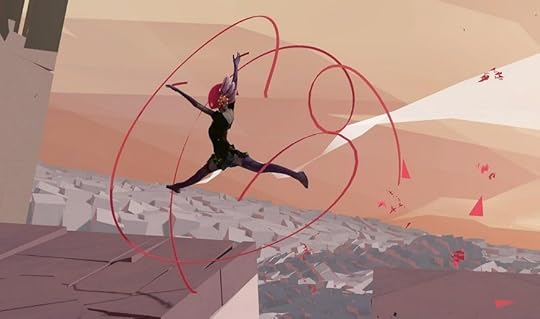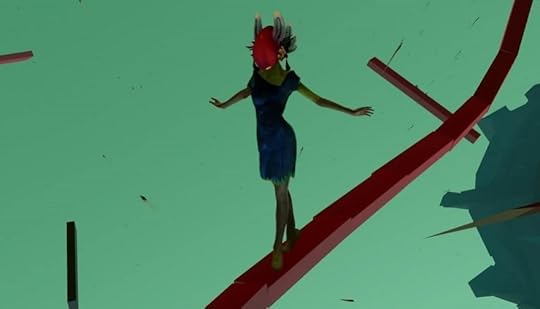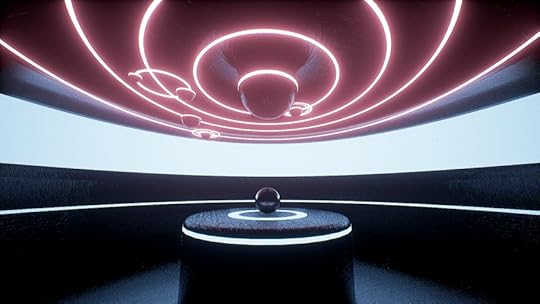Kill Screen Magazine's Blog, page 67
August 26, 2016
The Mr. Robot game will make you paranoid
I have a confession to make. I’ve spent the last few days hacking other people. It started innocently enough with a simple request. Soon, these requests became more complex. Now I find myself in an endless pit I can’t escape. One guy is threatening me. A mysterious group may or may not be after me. To top it off, I think I might have ruined someone’s childhood. Have I gone too far? Is someone out to get me? I shouldn’t have picked up that phone.
As my phone’s screen darkens and the credits roll, I’m brought back to reality. Thankfully, it was just a game, albeit one that felt real. This is what it feels like playing Mr. Robot: 1.51exfiltrati0n, a mobile game quietly released last week by Night School Studio (known for the recent-ish adventure game Oxenfree) and published by Telltale Games.
Set during the first season of the television show Mr. Robot, the game is played using the show’s fictional E-Corp messaging app. In the show, E-Corp is one of the biggest companies in the world with divisions spanning the technology, banking, and credit industries. Determined to topple the pervasive influence of this conglomerate, a hacker group known as fsociety has set their sights on destroying the company.
a study in the art of social engineering
Through 1.51exfiltrati0n, you play a role in making that happen through the text messages you send to fsociety members and those within E-Corp. One moment, you might find yourself trying to finagle your way into gaining access to someone’s account. In another, you might be forced to text words of encouragement to get an incompetent support staff to install something. In essence, the game attempts to be a study in the art of social engineering.
As with other mobile text-based games like Lifeline (2015), this game also happens in real-time. For a game built on persuading people to do what you need them to do, the wait between texts can be excruciating. This adds only more tension though to the experience as it preys on what we may have done countless times before (i.e. over-thinking, over-analyzing, or the creeping self-doubt that we shouldn’t have sent that text). 1.51exfiltrati0n also has shades of Emily Is Away (2015) with the characters’ delayed response, the typing indicators, and seeing your chosen reply animated and typed out (and at times reworded and corrected mid-sentence). These tiny details help hide the fact that your reply is chosen from pre-scripted options.
A behind-the-scenes video recently explained the origins of the game. With Sam Esmail, the creator of Mr. Robot, wanting to extend that universe to a more interactive medium, the team at Night School Studio successfully pitched the idea of a game played entirely through text messages. Adam Hines, co-founder of Night School Studio, explained in the same video how writing the game was “a lot of trying to predict what the players would want to do, what they want to push and pull at, and how they want to experience the plot … [that is] 100 percent canon.”
As the game ended and I said goodbye to my main contact, I was reminded by what that character told me. This was her life while I was just “on vacation.” Yet, despite being doused with paranoia and uncertainty at every turn, the game’s universe dragged me in. Now, I didn’t want to leave.
Mr. Robot: 1.51exfiltrati0n is available to play on iOS and Android .
The post The Mr. Robot game will make you paranoid appeared first on Kill Screen.
You shouldn’t be surprised that the Japanese PM dressed up as Mario
So at this point you likely saw what happened during the Olympics closing event. Yeah, I know. At first glance, it seems like an unnecessary commercial incursion in an already saturated Olympic event. Nintendo, a $42 billion-dollar videogame company, needs no additional exposure, especially of the heels of the success of Pokémon Go. This is an opportunity for Japan to shine a light on any number of different cultural contributions and instead, we get Shinzō Abe emerging from a warp pipe with Mario’s plumber cap. Don’t get me wrong—videogames are important, but truly important enough to be the key signifier for one of the oldest countries on the planet?
Well, yes!
Aside from the simple fact that Mario is one of the most recognizable cultural icons, perhaps ever, Nintendo as a company has an over 100-year old tradition of creating play experiences dating back to its playing card company days in the late 19th century. Nintendo was there as Japan nearly doubled its population, grew in military dominance, lost World War II, and then emerged again as a commercial force in the 80s. For those growing up in the shadow of Japanese culture through videogames and anime, Nintendo is instrumental to my earliest understanding of what Japan is and continues to be, particularly as someone who’s never been there.
perhaps Mario Kart can sneak by the IOC as an official event
And it’s precisely that soft form of cultural influence that demonstrates why Nintendo is so valuable for introducing the 2020 Tokyo Games. Not only does Nintendo give a marketable and accessible touchstone, it’s part of a larger pattern of cultural export that many countries have pursued. For example, in an effort to rebuild their public image, South Korea engaged in “gastrodiplomacy” to engage the world through food. They set up the Kimchi Institute to see which type of pickled vegetables would appeal to foreign markets. According to the Institute’s director, Park Wan-soo, the production technique was tweaked for different taste profiles for the traditional dish, “so that when we export it to the United States, we can tone down the spiciness and sourness, and when exporting it to Japan, we can heighten the sweetness.”
Sweden engages in something similar, but only with music. Now the third largest music exporter in the world, the government’s Swedish Arts Council, statens kulturråd, gives generous support to music as a form of cultural expression. A 2004 Swedish-language study found that 30 percent of Swedish children go to publicly subsidized, after-school music programs. Max Martin—the magician behind “…Baby One More Time,” “Teenage Dream,” and “We Are Never Ever Getting Back Together”—is one such graduate of the program and has credited his success to the program. And, of course, there’s Stockholm-based Spotify that’s now one of the biggest platforms for the world’s music.
And back we are to Nintendo and the Olympics. If South Korean and Swedish pop music are a lens through which we experience their respective homes, it follows then that videogames are the Japanese equivalent, bringing joy to billions around the world, but in a uniquely Japanese way. Who knows—perhaps Mario Kart can sneak by the IOC as an official event.
The post You shouldn’t be surprised that the Japanese PM dressed up as Mario appeared first on Kill Screen.
Bound makes a case for ballet in videogames
I was eight years old when I watched my first ballet performance, the Nutcracker, at an old, musty local theater. When the show ended, my mom asked if I wanted to be a ballerina, and to her surprise, I cringed. There was no way I could be a ballerina, I insisted. My body, short and stubby, could never be so lithe, yet strong. To be a ballerina, I thought, would be to somehow transcend the human body’s limits. To my childhood self, ballerinas were these inhuman, majestic creatures who, in their bending and gliding, could tell wordless stories. Ballerinas were beautiful to watch, to be sure, but I was scared of the power they held within their seemingly frail bodies. How did they not break?
Bound reminded me that ballet is simply a medium to express what it means to be oh-so painfully human—and maybe to be oh-so-painfully female. As Russian choreographer George Balanchine once said, “Ballet is woman.” The bodies of ballerinas bear scars and stories just like our own, and their graceful movement is but a metaphor for the ability to endure, to retain grace and stability, despite all odds.
I hadn’t expected a videogame to show me this.
///
As I played Bound, I was reminded of an essay written by Virginia Woolf in 1903, “A Dance in Queens Gate,” where she observed how dance has the power to “stir some barbaric instinct” so that “you forget centuries of civilization in a second … oblivious of everything save that you must keep swaying with the music—in & out, round & round—in the eddies & swirls of the violins. It is as though some swift current of water swept you along.” Her connection between dance and the flow of water through imagery is clear: “This one night we will be mad—dance lightly—raise our hearts as the beat strengthens, grows buoyant—careless, defiant.”
For Woolf, water, or the ocean itself, like a woman’s body in motion, is constantly in the process of change, and that similar ability to convey a natural flow is central in dance. That movement, that seamless fluidity, is part of what makes ballet in particular so mesmerizing. Women ballet dancers were viewed as the ultimate feminine ideal because of their fluid, inhuman movement: the epitome of elegance, poise, and control.
It is apt, then, that Bound begins with a heavily-pregnant woman sitting by the ocean while she dreams of ballerinas. Bound is a game about a ballerina known only as the Princess, who dances and flows through the metaphysical landscape of the pregnant woman’s consciousness. The Princess is a faceless, sylph-like creature with dark green skin and long limbs, whose every movement is a purposeful ballet move: she does not jump; she performs a grand jeté and flies. She does not walk; she glides across the floor, arms elegantly outstretched. Even when you stop playing the game for a moment, the Princess does not rest; she pliés or stretches. Nor does she fight: she pirouettes, spinning until the binds that hold her have no choice but to release. She is always a body in motion, balanced and stable, among fragments of memory. If fluidity is necessary as a metaphor for illustrating the features of memory, the passage of time, and processing of emotions, as some scholars have suggested, then perhaps using a ballerina to to tell the story of Bound makes complete sense.
As might be expected, the game presents no clear narrative: all we know is that the Princess must stop a giant creature known only as the Monster from destroying the metaphysical world. But the Monster never actually physically engages you—he only screams at you from afar, which somewhat dampens any sense of urgency. This fantasy realm requires no fighting; only dance through expression, which in itself perhaps is a way to tell some kind of story. There are, of course, questions presented, such as who the woman on the beach is, what her connection to the Princess is and, most importantly, what the Monster symbolizes. It’s these questions and the unique visuals of the world, however, that drove me to keep playing in lieu of a clear driving purpose.
the Princess does not rest; she pliés or stretches
It helps that it all takes place in a gorgeous world, one filled with bold color, reserved and minimal in detail, but complicated in movement—the vast world’s topography constantly shifts and undulates as the Princess moves through it, building and depleting as she interacts with the walls and floors around her. It’s an endless sea of the immaterial world whose architecture I can only think to describe as dreamy Wonderland meets Escher. Nothing is fixed in this realm, giving the player a feeling of initial discomfort and disorientation, but the game teaches you to revel in the freedom of movement. Even if the tessellations dissolve beneath you, you will fall into fragments of an ocean, only to quickly return again unharmed. You’re allowed to start anew and learn from your mistakes.
At the same time, the immaterial realm that you navigate as the Princess can appear so fragmented that it’s difficult to tell what is purposeful and what is a glitch. And because the camera keeps moving even when the Princess has stopped gliding forward, I often found myself having to look away from the screen to stave an emerging headache, which quite literally threw me out of the fantasy. So much movement—coming from the Princess herself, the backdrop of the realm, or the fragments directly around her—often became too overwhelming for my eyes, as if my own body was rebelling against any association with ballet due to its inadequacy. The game interactions were also not often responsive, and sometimes the Princess would jump further than needed. With the poor camera movements, and the Princess’s sometimes over-dramatic leaps and pirouettes, figuring out depths and lengths for jumps was frustrating, and I fell into the fragmented ocean of memory more times than I’d like to admit.
But, for me, the biggest problem with Bound is that five minutes of play was enough to give me a central idea of what it is all about: unlike games such as Abzû or Journey (2012), the visuals don’t keep changing, urging you to play longer just to see what beauty the game can show you. Most “levels” or sequences of memory within the immaterial realm that the Princess navigates are visually very similar, and the structure to complete those levels are the same: the Princess must travel through the realm, collect fragments of memory, watch the fragmented memory about the mysterious woman on the beach, travel back to the beginning of the level, and finally return to the real world to the woman sitting on the beach. In other words, every level is simply a different iteration of the same fragmented setting with similar color schemes and design. Soon, everything starts to look the same, which is a disappointment, and feels like a missed opportunity. After all, another aspect of why I found actual ballet performances like the Nutcracker so fascinating were the various stage backgrounds that were constantly changing, able to stimulate and stir its audience in various ways.
But, despite all its flaws, Bound is undoubtedly a celebration of the female form, both physically and spiritually. And, for that, it could be said to be a game better viewed as one to experience rather than to play, and the fact that it tries to encompass so many deep psychological metaphors in the videogame format is an ambition worth praising. In this sense, like the lithe, seemingly frail body of a ballerina, Bound carries a heavy story—one that may be too heavy, so much so that the rest of the game suffers a little. Yet, I appreciate that, through the hypnotic dancing of the Princess, I was given a window into the psychological landscape of a woman, while also experiencing her life and regrets. In that way, Bound, on some level, has helped me demystify and even relate to the inhuman ballerina form, but the poor mechanics in the game forced me to clumsily traipse through the landscapes I yearned to glide through, shattering the fantasy that in the world of Bound, even I could be an elegant prima ballerina.
For more about Kill Screen’s ratings system and review policy, click here.
The post Bound makes a case for ballet in videogames appeared first on Kill Screen.
August 25, 2016
Venineth promises nothing but ancient alien landscapes
Venineth’s internet presence is currently composed of three narrative-less videos, a handful of screenshots, and a loose description of an exploration-based puzzle game. Besides that, what you’ll be doing in its world is unknown. Their website mentions “ancient alien technology,” but the worlds that have been shown so far are barren but for a few beams of blue light. There are no characters, at least that have been shown so far, and no words, just a pinball-esque reference point for the player—you literally play as a ball—that rolls gently around the desert. It pushes one of the blue lights to touch the other, then makes its quiet way up the bridge and forward. The electric humming fades into the distance.
some trace of an ancient and incomprehensible people that has languished for eons
The videos that Venineth has had so far feel like something you would find in a satellite, some trace of an ancient and incomprehensible people that has languished for eons in the distance between stars. There is the implication of something vast, and little else. We are left to speculate about the origin of the beams, the ball, and the glowing portal that it rolls out of and into the wastes.
It is possible to conclude that the puzzles will probably have to do with the aforementioned beams of light, and that the blue place that the ball comes from, oppressively circular and bright, will have something to do with it too. Presumably their common color connects them to the alien technology that it will be your task to discover. Besides that, though, Venineth isn’t giving any hints. Aside from a few geometric pillars that could be a natural formation just as easily as they could be man-made, the fields and valleys shown in the screenshots are empty.
As you might expect of any extraterrestrial message found in a strange land, Venineth could take a while to decipher. Its creators don’t seem to be in a rush, and there is nothing to stop them from letting clues trickle out leisurely, posting more wordless videos that lead up to some unknown whole. Once this world is created, what we’ll find in it is anyone’s guess.
Watch Venineth’s transmissions on its website .
The post Venineth promises nothing but ancient alien landscapes appeared first on Kill Screen.
We don’t deserve Doggo
There are many things that separate the common Canis Lupus from the beloved “doggo.” Since the rise of meme culture in the late ‘aughts, dogs have become their de-facto mascot: sniffing, fraternizing, and bumbling their way through life. Many will be familiar with the gargantuan Facebook communities “Dogspotting” and “Cool Dog Group” (the latter of which has less rules and regulations), which pride themselves on spotting the most eccentric and adorable canines all over the world. All in all, every dog is a doggo: it’s an endearing title that highlights their goofiness and pureness of heart. Humanity doesn’t deserve dogs.
Every dog is a doggo
It’s not much of a surprise, then, that designer Jake Garett has blessed us with a Doggo game. Simple and charming like the species it’s named after, it places namesake Doggo in a sandbox dog park along with his owner and a few different canine companions. Doggo tasks you with, well, being a normal dog. Fetching a ball ravenously for your owner, weaving through slaloms (and being sure not to catch your tail), and the occasional exchange of barks with another pooch makes up the core of Garett’s game.
There’s no deeper meaning to be found in Doggo—the beauty is in leading a life as simplistic and carefree as that of the average dog.
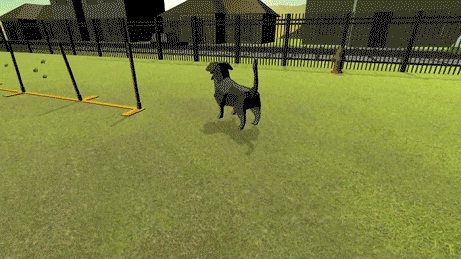
Doggo is free to download, but requires an Xbox controller be linked to your computer, which could mean installing some finicky drivers. The game as it stands now is a prototype—it’s not clear what features will be added in the future. Playing Doggo is not a lengthy endeavor, but you’ll leave satisfied, at the very least, by the reminder that dogs exist.
Go fetch Doggo for yourself here.
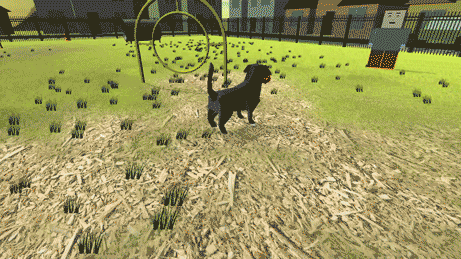
The post We don’t deserve Doggo appeared first on Kill Screen.
Nioh brings a real-life samurai legend to videogames
This article is part of a collaboration with iQ by Intel.
Fumihiko Yasuda, the director of upcoming samurai game Nioh, has been learning a little bushido lately. To bring the way of the warrior to life, he and his fellow developers at Team Ninja focused on how to translate a historic samurai legend into videogame mechanics. Emphasizing the distinct samurai fighting style, Yasuda took up the sword himself to ensure the game would feel as authentic and satisfying as possible. “I’m a little scared of how cleanly I can cut through things [now]. I’m a little hesitant,” he joked at E3, having made the flight over from Tokyo to LA, but fortunately leaving the sword behind.
More than just another action-heavy experience about chopping enemies in half, though, Nioh is part of a small but important piece to Japan’s cultural heritage. The game, which will be released later this year after almost a decade of development, continues the age-old tradition of mythologizing the fearless samurai legacy for a new generation.

Originally, 12th-century samurai stories were memorized by blind monks who played the lute and put on oral performances for crowds. As feudal Japan evolved into a highly-literate civilization (perhaps the most literate of pre-modern times), the people began writing everything down. Because ancient Japanese paper was sturdy and hard to destroy, many factual records of samurai survive to this day, from land titles to the medical descriptions of the wounds warriors suffered during battle. “Documentary recognition was almost a defining element of being a warrior in earlier times,” said Thomas Conlan, a professor of East Asian Studies and History at Princeton.
Team Ninja has woven real samurai story into the game’s fictionalized narrative
Nioh is a prominent example of recorded Japanese lore and history crossing over into the digital realm. In the game, the player controls the character of William Adams, a real-life samurai who was one of the very few Westerners to ever serve a shogun. Adams’s ship landed on the Izu Peninsula in Japan over 400 years ago, but his exploits as an explorer were well documented. Thanks to the extensive archival records on his life, the artists and designers at Team Ninja could weave a real samurai story into the game’s fictionalized narrative. “We’ve closely followed what we know about his life. You’ll see that play out in the story,” Yasuda teased, explaining how the game’s arsenal of bows, muskets, and sword stances are the actual weapons that Adams would have had at his disposal. In order to lend the swordplay authenticity, many of the team members studied kendo, a samurai ritual of training with bamboo swords to avoid injury.
However, first and foremost, Nioh aims to be a fun, flashy piece of blockbuster entertainment, as evidenced by the demo Team Ninja showed reporters at E3. A great deal of artistic license has been taken with the samurai code. For instance, the main character practices the Shinto religion, emphasizing the samurai’s well-documented beliefs in animism. However, only a game designer would use this to justify why a pirate from England can absorb little glowing energy orbs that represent pieces of enemies’ souls into his body. “We’ve combined those mythological and fantastical elements with his true story,” Yasuda claimed. To his point, Adams often battles with oni, yokai, and other supernatural spirits from Japanese folklore.

Another samurai-related concept Nioh takes liberty with is the idea of ki. The samurai’s energy force, which also inspired “the force” in Star Wars, has been re-worked to fit familiar action-adventure game mechanics. As the player’s ki depletes, the character grows weaker and loses the ability to strike, giving battles a staccato pace of offense and defense.
A great deal of artistic license has been taken with the samurai code
Yet while such departures from the scrolls of history may seem to discredit Nioh as a continuation of this Japanese legacy, it only shows how fantastical most modern interpretations of samurai are. According to historians, a large amount of today’s samurai representations are glamorized approximations at best, including the ubiquitous belief that samurai were fearless men (and women) who welcomed or even took pride in death.
“Warriors would not go out and try to die in battle. In most cases, that’s not how they would act at all,” said Conlan, explaining how most true samurai never even saw battle.“But in peaceful times, the cases where people would die became glorified. You can see how this gets idolized by the warriors themselves over time.”

In short, the most beloved re-tellings of samurai stories take a bold and dramatic mythological approach to the past. Whether it is the famous samurai cinema of Akira Kurosawa, which originally inspired Nioh, or the tale of the Taiheiki, which was popularized in the 17th through 19th centuries in feudal Japan, the fantasy continues to inspire Japanese artists to explore this figure of national identity.
Games like Nioh, where one man can take down an army of foes with the knowledge that death is just a temporary Game Over screen, may even serve the fantasy of the samurai tale best. “That line between life and death is a concept we touch upon,” Yasuda said. “Samurai are always walking that line between life and death.”
At least, that’s how the story goes.
The post Nioh brings a real-life samurai legend to videogames appeared first on Kill Screen.
Hey, perhaps don’t set your game in “fantasy primitive africa”
Where and when is the “fantasy primitive africa” of upcoming survival game Voodoo? “You will be one of the founders of civilization,” says Brain in the Box, the Italian studio behind it. Bear in mind that the first humans popped up in East Africa around 250,000 thousand years ago, and civilization has its roots in Mesopotamia and Egypt around 14,000 years ago—not much fantasy there.
The trailer for the game also includes the bow and arrow, metal tools, and tribal masks. Having these all in the same place is a collapsing of time that we haven’t had written history long enough to be able to adequately describe with figures or events. The map is a similar collapsing of space, with the jungle, the volcano, and the savanna all squished right up against the desert.
Brain in a Box are right on one account, though: Africa is a “poorly used setting in videogames,” but not because it’s used infrequently. Democracy 3: Africa let you govern a handful specific countries from Tunisia to South Africa. Far Cry 2 (2008) takes place in a fictional Central African country with a failed government and a couple of revolutionary groups in control. You go to Africa the continent-country in Resident Evil 5 (2009), and mow down black-skinned zombies. Africa is a “poorly used setting in videogames” because it’s too often a heavily-abstracted backdrop of conflict for expansion packs and ill-advised sequels.
Oft-paired with pirates and ninjas, the stereotypical “African tribesman” is a mishmash of images from mostly Eastern African Masaai and Zulu traditions. In Voodoo, we see oval shields with horizontal bars—lifted from Zulu shields in documented use in the 18th and 19th centuries—and then the use of the word “voodoo” is tied up in traditions associated with the African Diaspora. “Vodun” in West Africa isn’t quite the same as the traditions that were popular in communities of slaves brought to the Caribbean and North America. “Voodoo” in Louisiana isn’t quite the same as “vodou” in Haiti, either. The characters in the trailer look less like stylized people and more like animals, crouched over with wide eyes and elephant trunk penises. The face next to the health indicator bears the bright red lips associated with offensive caricatures understood globally.
It’s ostensibly set in a real place at a real time
This picking and choosing out of religions and cultures and offensive imagery strips people and builds out of them an aesthetic. Africa is compressed, and specific cultures are kneaded into “fantasy primitive africa.” When stereotyping like this gets ingrained, it gives us a pass—an excuse not to think more deeply about drone strikes in Somalia, or to dismiss civil war in Sudan as tribal scuffle, or to think refugees are loincloth-wearing hut-dwellers.
But Voodoo is just a game, of course, and it’s fantasy africa, not real Africa. It bears no relation to the real world, except that it’s eerily similar to harmful played-out stereotypes. It’s ostensibly set in a real place at a real time, but it only reflects that superficially. At GDC 2015, Ben Esposito gave a talk called “not my story” about his upcoming game Donut County, and the process by which he realized that repurposing other cultures into an aesthetic for his project could be problem. It’s why Donut County now has a story that’s relevant to Esposito’s life, and that he’s already an expert at telling.
There is a moment in the trailer for Voodoo where it really looks like that old PS2 tech demo for Nico—the game that eventually became Shadow of the Colossus (2005). But Team Ico’s games don’t layer fantasy on top of tasty ideas plucked from their contexts in cultures that already exist. The Forbidden Land of Shadow of the Colossus is designed—its language, its history, its culture are defined by Team Ico, and aren’t made out of tired stereotypes about specific people or places. In fact, part of what enables the world of Shadow of the Colossus to inspire so much awe is that its ruins and tablets point to a rich history that we know we know too little about.
Maybe that’s something for the creators of Voodoo to take on board. You know, just, maybe.
You can find out more about Voodoo over on its website.
The post Hey, perhaps don’t set your game in “fantasy primitive africa” appeared first on Kill Screen.
Nearly 10 years in the making, there’s still plenty of reason to care about Owlboy
Owlboy, which has been in the making since 2007, was at one point a joke. It sat alongside Fez (2012) as retro-sentimental platformers by independent studios that promised a lot, but seemed fated to never come out. “Do you reckon Owlboy will come out next year?” someone might ask. “Haha, yeah right,” might be the reply. Fez did eventually come out after five years of waiting, but Owlboy didn’t—it’s been nearly a decade now.
When Jo-Remi Madsen of the Norway-based D-Pad Studio tells me it’s “OWLBOY TIME,” I presume that it is a joke. The concept of Owlboy Time is more a unit of measurement to me now, one that means something promised to arrive but never actually will. But Madsen isn’t joking, and apparently “OWLBOY TIME” means the game is actually coming out. Like, imminently—in the fall of this year, apparently. After an exchange, Madsen then tells me that the release date for Owlboy will be announced during PAX West at an “Owlboy Panel” that starts at 2pm on September 5th. Then a playable demo is thrown over to me and I know to take it all seriously.
///
As respectfully as I can, I ask level designer Adrian Bauer “Why has it taken nearly 10 years?” The answer, in short, is: it’s “complex.” The person who programmed the original prototype left back in 2009, and so new programmers were needed—it wasn’t until 2010 that Jo-Remi and Henrik Andersen joined the team as the two programmers, and D-Pad Studio was officially formed. Other reasons include the fact that the XNA engine the team uses wasn’t optimized until around 2012. The team also worked on another game, Savant: Ascent, which was released in 2013. “Also life,” Bauer adds to the list, accounting for loved ones passing away and members of the team experiencing burn out, forcing breaks in the work on Owlboy.
“showcase pixel art done properly”
The other major factor is one that the lead artist on Owlboy, Simon Andersen, is able to speak on. D-Pad has taken no shortcuts in the creation of the game, particularly in terms of its pixel art. “I decided I was going to use Owlboy as a way to showcase pixel art done properly, using as few ‘cheats’ as possible,” Andersen said. What this means is that the entire game is made pixel by pixel. “No gradient or blur effects, no tracing or 3D captures,” Andersen said. “Not with millions upon millions of colors, but as limited a palette as I could allow. The only thing that we’ve had to do is allow rotations, but I’m just going to have to accept that.” He laughs.
This commitment is rooted in the game’s inception back in 2007, which was to showcase the advantage of 2D art over 3D—this was before the more recent renaissance of pixel-art titles, like Superbrothers: Sword & Sworcery EP (2011) and Hotline Miami (2012). Back in 2007, Andersen saw the arrival of Nintendo’s Wii as changing videogames forever more, and with it was pushed the idea that pixel art was more outdated than ever. His response was to create “a title that could showcase the medium’s strengths.” He first looked to spin his ambition off the Kid Icarus series, mostly due to rumors back then of a 3D version that was supposedly on its way, but “none of the concepts for indoor flight seemed to translate well to 3D,” according to Andersen. He saw in this an opportunity to show how 2D art was a better fit for that type of game. The concept then grew further while Andersen was playing Super Mario Bros. 3 (1988) around that time. The Racoon Suit gives Mario the ability to descend slowly after a jump, and Andersen thought about the potential in pressing the button again to fly. “I imagined you could fly pretty high, maybe find floating islands,” he said. “Those islands would be so removed from society you might not be able to understand their language.”
The concept of an ancient culture suffused with enigma was there from the start, then. The decision to base it all on an owl society wasn’t. That would come later, once Andersen had found the answer to how the protagonist of this game would be able to fly. A lot of options were considered: jetpacks, an insectoid character, even a girl that spun her pigtails as a propeller. “Then, my girlfriend suggested an owl and everything sort of fell into place right there,” Andersen said. “Owls would have their own cloaks that act as wings. Owls are also generally symbols of knowledge, and with the cloaks being something you inherit, I thought having a disabled protagonist would give him a lot to live up to.”
I’d never considered Otus … disabled
Despite having played Owlboy‘s first demo back in 2011, as well as the new one handed to me only days ago, I’d never considered Otus, the game’s protagonist, disabled. But now it’s been pointed out to me I can see it. Otus not only has trouble flying—which is something he is bullied for by his peers in the game’s tutorial stages—but he is also mute, which puts him at a disadvantage when communicating. All the pieces were there for that reading of the game but I hadn’t put them together. And it should be emphasized as a reading, just as was the case with Octodad: Dadliest Catch (2014), which can be seen as an “analogy for invisible illnesses.”
However, in Owlboy, there was intent from Andersen to depict a disabled protagonist through Otus, whereas Octodad was never considered in that light by his creators. That said, Andersen now refers to Otus as being “not very able,” rather than committing to the term disabled. This manifests itself in the game in a third way—that is, not through his muteness or his flying capabilities but in Otus’s inability to attack. Mario had his jump, Mega Man had his arm cannon, but Otus basically has nothing; the most he can do is perform a spin, which is more a means of defense. Instead, what Otus must do, and which is one of the central components of the game, is carry other people around with his feet who can fight for him.
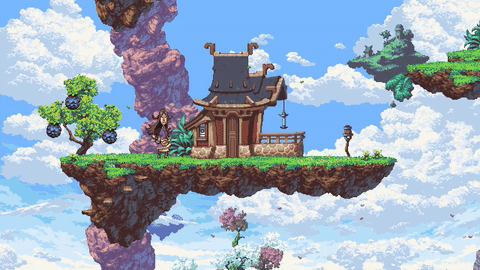
In the current demo, only one of these people is seen: Geddy, who is the villager’s engineer, and who carries a pistol used to shoot enemies and clear certain pathways in the game’s dungeons. Presumably, the rest of the cast of support heroes will follow suit, offering different abilities necessary to advance from sky island to sky island. Over the years, as more and more pixel art titles have come and gone, it’s this central idea of friendship that has become the defining point of the game. Otus teams up with the people he meets as he journeys to take down the sky pirates that raided his village. They are united in purpose, and despite Otus’s shortcomings, he proves himself in other ways that don’t necessarily involve direct violence. The pixel art is, of course, a treat to look at and admire, and on a technical level it is still impressive, but it doesn’t have the same impact it would have had if the game was released nine years ago—now Owlboy doesn’t need to prove pixel art’s worth.
The team understands that the game should have appeal beyond its visuals, and so, in steadily working on the game over the years, have looked to develop the themes inherent in Otus’s relationships to other characters. Bauer told me that, at one point, the team did consider giving Otus the ability to do damage himself, but it didn’t fit. “If Otus could do everything there wouldn’t be a reason for players to think about the gunners and to almost always have them with you,” he said. “I think Otus is a dependable character in the game (especially with the player being that confidence) but without his friends he would be in over his head. Otus is still a kid and can’t do everything.”
These themes of cooperation and resolve are also what has kept D-Pad Studio pedaling away on Owlboy for the past nine years. “It’s a huge part of our teamwork,” Bauer said. It’s a small team, each member with their own individual talents, each responsible for huge parts of the game. Now, it’s all coming together so that, finally, Owlboy will be able to fly.
You can find out more about Owlboy on D-Pad’s website and the game’s Steam page.
The post Nearly 10 years in the making, there’s still plenty of reason to care about Owlboy appeared first on Kill Screen.
Stare upon the ghostly faces of Return of the Obra Dinn
One could almost consider exploring history a form of puzzle solving. Extrapolating facts and events through ruins and artifacts and documents, putting together a cohesive story through the remnants of times. Lucas Pope’s upcoming Return of the Obra Dinn, his narrative-driven follow-up to Paper’s Please (2013), is a game that encompasses that process. A mystery of a lost ship pieced together by discovered documents and flashbacks triggered by the remains on board.
In Pope’s latest updates in his TIGSource devlog, those documents and artifacts are slowly taking shape. Recent GIFs show the lengthy manifest, revealing the crew names, their roles, and place of birth. This crew record is complemented by a sketchbook drawn by the ship’s artist, offering snapshots of life on the ship before its mysterious fate. As you uncover more about the crew, you’ll be able to link names with the faces in the sketches.
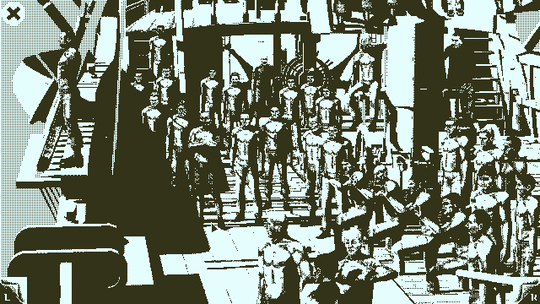
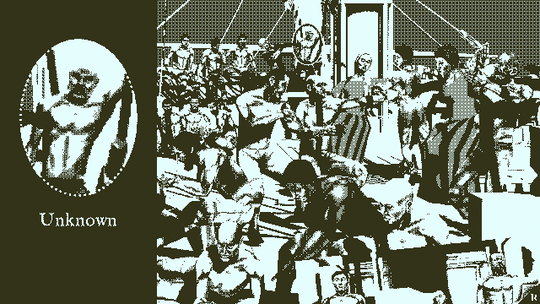
The Obra Dinn is a character in this mystery as well, and other documents imbue the ship with its own history. A deck map not only lets the player keep track of flashbacks and discoveries, but also gives the ship a sense of presence, while the sea chart traces the Obra Dinn’s journey across the Atlantic.
a narrative jigsaw where the pieces are the dead
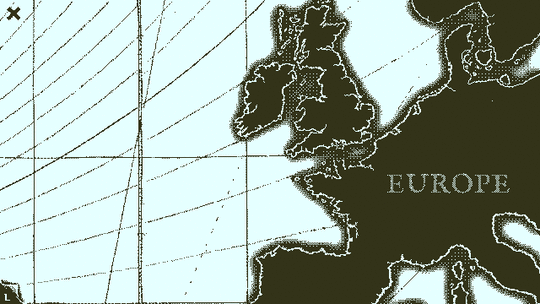
Through these various artifacts from the lost ship, the mystery of eerie fate can be pieced together, a narrative jigsaw where the pieces are the dead, the documents, the decrepit husk of the titular ship.
Return of the Obra Dinn is still in heavy development, and has no release date at the moment. For more details on the game and to follow Pope’s progress, you can read through his devlog here.
The post Stare upon the ghostly faces of Return of the Obra Dinn appeared first on Kill Screen.
The domestic horror of Allison Road isn’t dead after all
In early June, first-person survival horror game Allison Road was cancelled. Today, it’s alive and kicking. Allison Road‘s creator, Christian Kesler, announced this week that he’ll continue working on the game—which some call a “spiritual successor” to the Silent Hills playable teaser P.T. (2014)—on his own, under the label of Far From Home.
“After the set back, I took a bit of a break from working on it and re-evaluated all the work that had been so far—the whole journey, so to speak,” Kesler told IGN. “I started making a few necessary changes, in my opinion, to the story and the flow, little bits and pieces here and there, and before I knew it, it sort of naturally came back to life.”
“It’ll be two years since an idea out of a notebook started to come to life”

Allison Road started as a Kickstarter project. The game was more than halfway to its goal when Kesler—then operating under a studio called Lilith Ltd.—pulled the campaign in favor of a publisher. In October 2015, Worms (1996) series developer Team17 stepped in to publish the game. Not much about the game was released until the announcement of its cancellation. And still, it’s not exactly known what went wrong between Lilith and Team17. Regardless, it doesn’t seem to be a deterrent to Kesler; he appears confident in his ability to move forward on his own.
“For our gameplay trailer, I did all the modeling, texture, shaders, lighting,” Kesler said, “and thankfully, at a lot of the mechanics are already implemented from the previous development phase, so I can comfortably take the game forward myself.” He’s certainly got the experience; before Allison Road, Kesler worked as a concept and environmental artist on films like Avatar (2009), The Hobbit (2012), and Guardians of the Galaxy (2014). If Allison Road ends up needing “new features and mechanics” that Kesler can’t implement himself, he’s reach out for support.
“In September, it’ll be two years since an idea out of a notebook started to come to life and some people have been with it from the beginning,” Kesler said. “Imagine. That’s really fantastic.”
A release date for Allison Road is not currently available. For more on the Allison Road, head over to the game’s website.

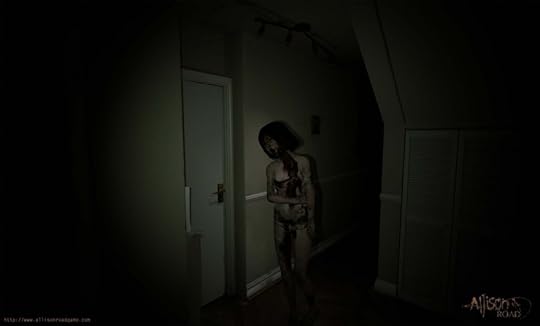

The post The domestic horror of Allison Road isn’t dead after all appeared first on Kill Screen.
Kill Screen Magazine's Blog
- Kill Screen Magazine's profile
- 4 followers




